Specialized Services
Bra Fitting
Finding a bra that fits starts with getting the right size
According to research, approximately 80-90% of women are not wearing the right bra size. This leads to increased pain and poor posture. Wearing the right bra can help improve posture, put less strain on your upper back and neck, breathing easier, and improve overall comfort.
We have fit over 600 women in the last seven years with only four women being in the correct size. We will fit you appropriately, including recommendations on inserts and bra types that would meet your needs.
The rule of thumb for bra fitting is you should be measured every 6 months or if you gain/lose 10 pounds as your bra size may have changed. A good bra that is worn several times per week will maintain its structure for 6-12 months depending on size and care techniques.
We do fittings both as part of the rehab process as well as on a walk-in basis. The cost of a scheduled or walk-in fitting is $20. Located just south of Greenwood in Whiteland.
Physical Therapy Modalities Informational
Softwave
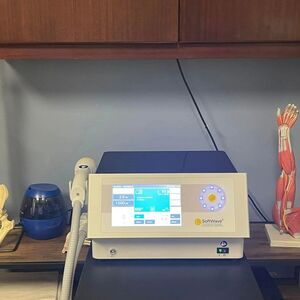
SoftWave is a type of shockwave therapy used in the treatment of musculoskeletal pain and injuries. It is a non-invasive treatment that uses low-intensity shockwaves delivered to the affected area to promote tissue healing and reduce pain.
During a SoftWave treatment, a handheld device is pressed against the skin over the affected area. The device emits low-intensity acoustic waves that penetrate the tissues beneath the skin’s surface. These shockwaves stimulate the body’s natural healing mechanisms by increasing blood flow, breaking down scar tissue, and promoting the growth of new tissue.
SoftWave has been used to treat a variety of musculoskeletal conditions, such as plantar fasciitis, tennis elbow, and Achilles tendonitis. It can also be used to treat painful trigger points in muscles and to promote bone healing in certain fractures.
The therapy is usually performed over multiple sessions, with each session lasting approximately 10-15 minutes. SoftWave therapy is generally considered to be safe and has few side effects. However, it is not suitable for individuals with open wounds, bleeding disorders, or certain medical conditions such as pacemakers. It is important to consult with a healthcare professional to determine if SoftWave therapy is an appropriate treatment option for your specific condition.
Indiba
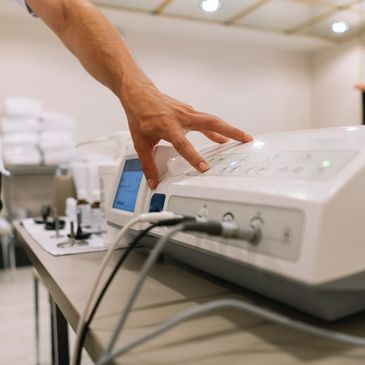
Indiba is a non-invasive therapy that uses radiofrequency technology to stimulate tissue healing. It is a type of diathermy, which uses high-frequency electromagnetic currents to generate heat in the body tissues to aid health and healing.
Indiba works by sending a controlled frequency of energy to the affected tissue to stimulate collagen synthesis, improve circulation, and promote cellular metabolism. This can help reduce inflammation, improve range of motion, and alleviate pain associated with musculoskeletal disorders.
The therapy is delivered through a handheld device applied to the skin that generates radiofrequency waves at a specific frequency. The device moves in a continuous circular motion over the skin, creating a mild warming sensation in the area being treated.
Indiba has been used to treat a variety of conditions, including sports injuries, arthritis, tendonitis, and muscle strains. It can also be used for aesthetic purposes, such as skin tightening and reducing the appearance of cellulite.
Indiba is generally considered safe and non-invasive and has minimal side effects. However, it may not be suitable for everyone. Individuals with metal implants, pacemakers, or certain medical conditions should not undergo Indiba treatment. It is important to consult with a healthcare professional to determine if Indiba is a suitable treatment option for your specific condition.
Infrared Red Light Therapy
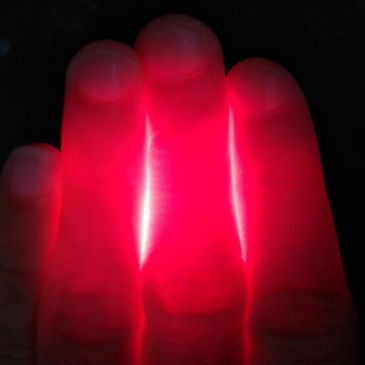
Infrared red light therapy, also known as low-level light therapy (LLLT), is a non-invasive medical treatment that uses light of a specific wavelength range to stimulate cellular activity and promote healing. The therapy utilizes infrared radiation to deliver targeted light energy to the tissues beneath the skin’s surface.
The light can be applied directly to the skin or through devices that emit light, such as LED panels or laser devices. The body’s tissues absorb the light, which stimulates the production of adenosine triphosphate (ATP), a molecule that delivers energy to cells. This increased energy production helps promote tissue healing by reducing inflammation, improving blood flow, and stimulating the growth of new cells.
Infrared red light therapy can be used to treat a variety of conditions, including muscle and joint pain, wound healing, decreased circulation, and even acne. It can also have positive effects on mental health such as reducing anxiety and depressive symptoms.
Infrared red light therapy is generally considered safe, non-invasive, and painless. However, it may not be suitable for everyone. Individuals with light sensitivity or certain medical conditions, such as pacemakers, should not undergo infrared red light therapy. It is important to consult with a healthcare professional before undergoing this or any other type of therapy to determine if it is appropriate and safe for you.
Dry Needling
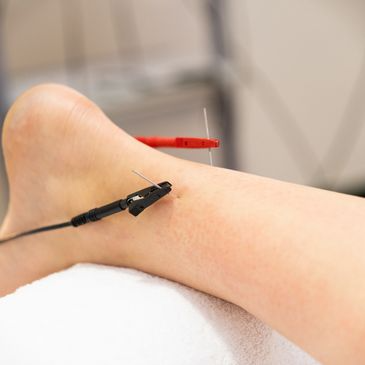
Dry needling is a form of therapy used to treat musculoskeletal pain and tightness, especially in the muscles, tendons, and joints. It involves the insertion of thin, sterile needles into specific myofascial trigger points that are causing pain and discomfort.
The concept behind dry needling is to release tension and tightness in the muscle fibers that are causing pain and discomfort using the mechanical effects of the needles. The goal is to stimulate the trigger point, elicit a muscle twitch response, and promote blood flow to the area, which can help reduce pain, inflammation and improve muscle function.
Dry needling can be used to treat a variety of conditions, such as neck pain, low back pain, headaches, and fibromyalgia. The number of treatments required varies depending on the individual and the nature of the condition, but many people notice an improvement in their symptoms after the first few sessions.
Dry needling is safe and is typically performed by a licensed healthcare professional, such as a physical therapist or chiropractor, who has undergone specialized training in the technique. However, some people may experience minor discomfort during the procedure, and there are some risks involved, such as bleeding, bruising, or infection, though they are rare. It is important to discuss the potential benefits and risks of dry needling with a healthcare professional before undergoing the treatment.
Astym
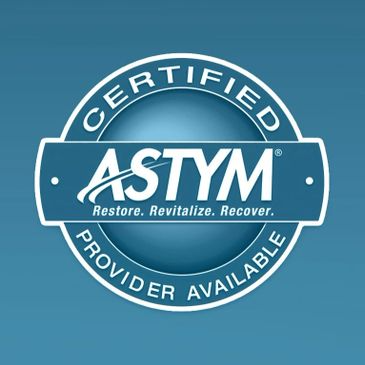
Astym is a manual therapy technique used to treat musculoskeletal injuries and conditions, such as tendonitis, sprains, and strains. It is a non-invasive treatment that involves the use of instruments to stimulate soft tissue healing.
During an Astym treatment, a healthcare professional uses specialized instruments to apply pressure and movement to the affected area. The instruments are designed to detect and break down scar tissue, promote blood flow, and stimulate the body’s natural healing processes.
A typical Astym treatment lasts around 20-30 minutes and may involve deep pressure with the instruments, as well as stretching and exercises. The treatment is usually performed over several sessions, with each session building on the progress of the previous one.
Astym is designed to be a safe and effective treatment for a range of musculoskeletal injuries and conditions. It is particularly useful for individuals who have not responded well to other treatment options, such as physical therapy or medication.
However, Astym is not suitable for everyone. It may not be appropriate for individuals with certain medical conditions or who have had recent surgery. It is important to consult with a healthcare professional to determine if Astym is a suitable treatment option for your specific condition.
Electrical Stimulation
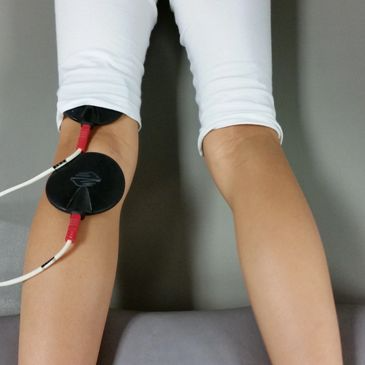
Electrical stimulation is a type of therapy that involves the use of electrical currents to stimulate the nerves and muscles in the body. The electrical currents can be applied through electrodes placed on the skin or, in some cases, implanted directly into the muscle tissue.
There are several different types of electrical stimulation that can be used for therapeutic purposes, including:
1. Transcutaneous electrical nerve stimulation (TENS) – a low-frequency electrical current is applied through electrodes placed on the skin to target the nerves and reduce pain.
2. Neuromuscular electrical stimulation (NMES) – higher-frequency electrical currents are applied to stimulate the muscles and improve strength and function.
3. Functional electrical stimulation (FES) – electrical currents are used to stimulate specific muscles or nerves to produce a desired movement or function, such as improving walking ability in individuals with paralysis.
4. Galvanic stimulation – a direct current is applied to the body to reduce pain, stimulate the healing of tissues, or improve circulation.
Electrical stimulation is used for a variety of conditions, including back pain, muscle atrophy, peripheral neuropathy, and stroke rehabilitation. It is typically performed under the guidance of a healthcare professional, who will customize the treatment plan to the individual’s specific needs and monitor for any potential side effects or complications.
Iontophoresis

Iontophoresis is a medical treatment that uses a small electric current to deliver medication or other therapeutic substances through the skin and into the body. The treatment involves placing electrodes on the skin, typically in the area where the medication is needed. Then, a low-level electrical current is applied to the electrodes, which helps to drive the medication through the skin and into the area where it is needed.
Iontophoresis is often used to treat conditions such as excessive sweating (hyperhidrosis), inflammation, and pain management. For example, it can be used to deliver anti-inflammatory medications to the site of pain or injury, or to inject a tiny amount of anesthetic into the skin before a surgical procedure.
Iontophoresis is considered a safe and non-invasive treatment option. However, like all medical treatments, it should only be used under the guidance of a qualified healthcare professional.
Diathermy (Not Available)
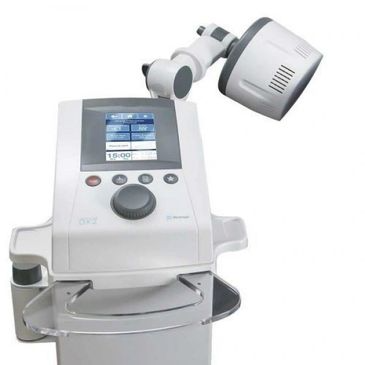
Diathermy is a medical treatment that uses high-frequency electromagnetic currents to generate heat in the body tissues. It is often used as a therapy for musculoskeletal injuries such as low back pain, joint contractures, and sports injuries.
During diathermy, a device called a diathermy machine is used to deliver electromagnetic energy to a specific area of the body. The electromagnetic energy is absorbed by the body tissues, which causes them to heat up. The heat produced by electromagnetic energy can help relieve pain, reduce inflammation, and promote the healing of damaged tissue.
There are two main types of diathermy:
1. Shortwave diathermy – uses high-frequency electromagnetic energy to produce heat deep in the body tissues. It can be used to help reduce pain and inflammation associated with injuries, as well as relax muscle spasms and increase range of motion.
2. Microwave diathermy – uses lower frequency electromagnetic energy to produce heat in the superficial tissues, such as skin and subcutaneous tissue. It can be used to help improve circulation, reduce pain, and promote healing in superficial wounds.
Diathermy is generally considered to be safe, but there are some risks. For example, people with pacemakers or metal implants should not undergo diathermy treatments. It is important to discuss all potential risks and benefits with a healthcare provider before undergoing diathermy treatment.
Contrast Baths (Not Available)

Contrast baths, also known as hot/cold immersion therapy, is a type of hydrotherapy that involves alternating exposure to hot and cold water. This therapy can be used to treat a variety of conditions such as arthritis, muscle sprains and strains, and other musculoskeletal injuries.
During a contrast bath treatment, the affected limb or body part is first placed in hot water for a few minutes to dilate blood vessels and promote blood flow. This is followed by placing the same limb in cold water for a few minutes to constrict blood vessels and reduce inflammation. The hot and cold water exposure is alternated for several cycles, with each cycle lasting a few minutes.
The hot and cold water temperatures used in a contrast bath treatment can vary but are generally around 100-110°F for the hot water and 50-60°F for the cold water. The treatment usually lasts around 30 minutes.
There are several benefits to using contrast bath therapy, including reducing pain and inflammation, improving range of motion, increasing blood flow, and reducing muscle spasms. It can also be helpful in accelerating the healing process of injuries like sprains and strains.
However, there are some precautions to take before considering contrast bath therapy. Individuals with certain medical conditions such as diabetes or circulatory disorders should avoid hot and cold exposure due to the increased risk of burns or injury. Therefore, it is important to consult with a healthcare professional to determine if contrast baths are a safe and suitable treatment option for you.
Cupping
(Not available)
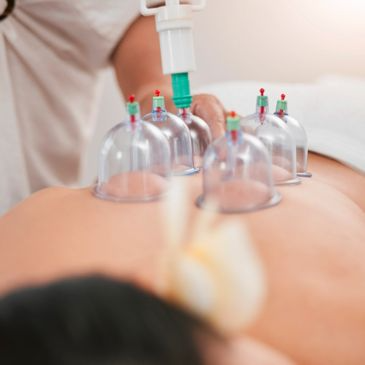
Cupping is an ancient alternative medicine technique that involves the use of cups to create suction on the skin. The suction is created by using either heat or air to create a vacuum inside the cups, and the cups are then placed on specific areas of the skin. The suction effect draws the skin and underlying tissues upward into the cups, creating a form of negative pressure therapy.
Cupping is typically used as a complementary therapy to treat pain, inflammation, and muscle tension. It is often used to treat conditions such as back pain, neck pain, headaches, and respiratory issues.
There are different types of cupping, including dry, wet, and fire cupping. Dry cupping involves the use of only suction, while wet cupping involves the use of suction and small incisions to remove small amounts of blood. Fire cupping involves the use of a flame to create a vacuum inside the cups.
Cupping is generally considered safe, but there are some risks involved, such as skin irritation, bruising, and burns. It is important to seek cupping therapy from a qualified healthcare professional who is trained in the technique to ensure it is done correctly and safely.
While there is limited scientific evidence to support the efficacy of cupping, some individuals have reported experiencing pain relief and improved mobility following treatment.
Fluidotherapy (Not available)

Fluidotherapy is a type of physical therapy that uses dry heat and small particles such as corn husks, rice, or pumice to create a fluidized bed. The dry heat and particles create a whirlpool-like effect that provides a massage-like sensation to the user.
During a fluidotherapy session, the affected body part is placed in a chamber containing the fluidized particles with heated air circulating throughout, creating a warm, massaging sensation. The heat helps to increase circulation, reduce pain and inflammation, promote tissue healing, and increase the range of motion.
Fluidotherapy is typically used to treat conditions such as arthritis, tendonitis, bursitis, and other musculoskeletal conditions. It is also useful in rehabilitating sprains, fractures, and nerve injuries.
Fluidotherapy has several benefits over traditional heat therapy, including the ability to target specific areas and provide a massage-like sensation. Additionally, wireless particle therapy is ideal for
Aquatic Therapy
(Not available)
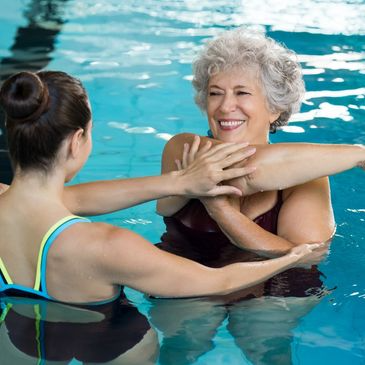
Aquatic therapy is a type of physical therapy that takes place in a pool or other aquatic environment like a river, lake or ocean. It involves exercises and movements designed to improve physical function, mobility, strength, and flexibility; and it’s performed with the support and resistance of water. This therapy can benefit people with a wide range of conditions such as arthritis, back pain, stroke, spinal cord injuries, and even neurological disorders. By using the buoyancy, resistance, and viscosity of water, aquatic therapy provides a low-impact workout that reduces stress on the joints, supports the body, and enhances healing and recovery.



